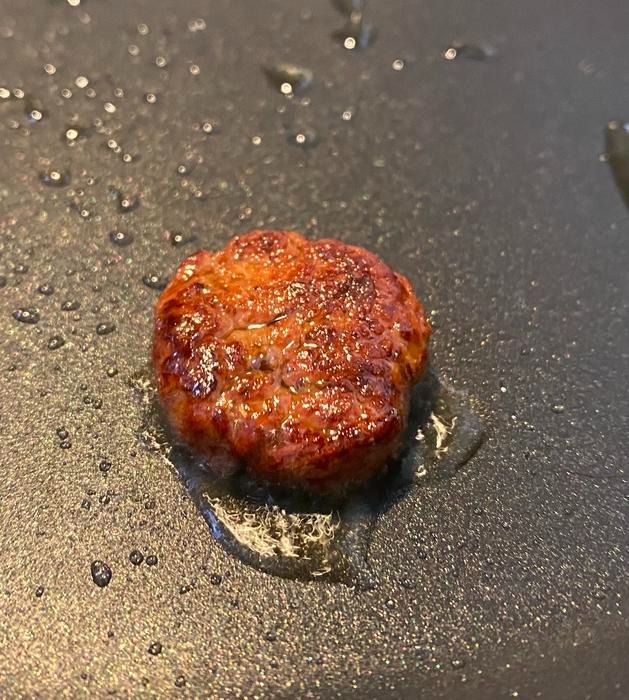These fungus-based innovations are breaking the mold.
Scientists are making environmentally-conscious food out of fungi, and, according to a new study, a particular kind of mold can be modified and transformed into a juicy burger patty.
The research, published Thursday in the journal Nature Communications, looked at Aspergillus oryzae, or koji mold, which is used to ferment various foods in East Asian cuisine, such as soy sauce, miso and sake.
But to morph the fungi into a delectable patty, the scientists had to modify the mold using the gene editing technology CRISPR-Cas9.
Study author and postdoctoral researcher Vau Hill-Maini, a former chef who is now a bioengineer, worked alongside his colleagues at UC Berkeley, the Novo Nordisk Foundation Center for Biosustainability and the Joint BioEnergy Institute for the study.
The researchers boosted the fungi’s production of the antioxidant ergothioneine, as well as the molecule heme — the latter is present in animal tissue that provides the hallmark color and flavor of meat and is synthetically created from plants to give Impossible Burgers their uncanny meatiness.
Thus, the white fungi blossomed red and, after dehydrating and grinding, the mold could be easily formed into a meat-like patty and “fried into a tempting-looking burger,” the scientists said.
“What we’re trying to do is to look at what is the fungus making and try to kind of unlock and enhance it. And I think that’s an important angle that we don’t need to introduce genes from wildly different species,” Hill-Maini, a former chef who is now a bioengineer, added in a statement.
“We’re investigating how we can stitch things together and unlock what’s already there.”
However, the scientists are still toying with modifying its texture, experimenting with how to best program the fiber structures for a meatier feel, said Hill-Maini, whose mission is to craft appetizing meat alternatives that consumers would enjoy eating.
“I’m really excited about how can we further look at the fungus and, you know, tinker with its structure and metabolism for food,” he said.
“I think it’s a fundamental aspect of synthetic biology that we’re benefiting from organisms that have evolved to be really good at certain things.”
Organisms like koji mold have been involved in the food preparation process “for centuries,” said UC Berkeley professor Jay Keasling, a senior scientist at Berkeley Lab.
“By unlocking koji mold through the development of these tools, we are unlocking the potential of a huge new group of hosts that we can use to make foods, valuable chemicals, energy-dense biofuels and medicines,” he said. “It’s a thrilling new avenue for biomanufacturing.”
Keasling and Hill-Maini previously worked with chefs at the Michelin-star star restaurant Alchemist, located in Copenhagen, to create a dish from Neurospora intermedia — and discovered that, because the fungus emits enzymes as it grows and when grown on rice, it liquifies and sweetens the starchy carbohydrate.
“We developed a process with just three ingredients – rice, water and fungus – to make a beautiful, striking orange-colored porridge,” Hill-Maini explained of the dessert dish, which became an offering on the establishment’s tasting menu.
“And I think that what it really shows is that there’s opportunity to bridge the laboratory and the kitchen.”














